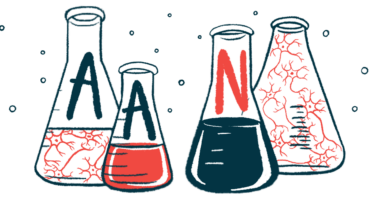Treatment Shows Favorable Outcomes for Patients with Juvenile Myasthenia Gravis, Study Reports

Treatment of juvenile myasthenia gravis (JMG) lessens the severity of symptoms in most patients, leading to stable remission without significant amounts of medication, according to a study of Polish patients.
The study, “Treatment outcome in Juvenile-onset Myasthenia Gravis,” appeared in the journal Muscle & Nerve.
JMG is a form of myasthenia gravis in children and adolescents, and typically requires life-long management. Given the limited information about JMG treatment and its associated outcomes, the scientists evaluated the clinical course and perceived health status of patients treated over a 15-year period at a single center of the Medical University of Warsaw, in Poland.
The medical records of 101 JMG patients (83 females, with a mean age of 12.8 years at onset, and 13.7 years at diagnosis) were analyzed to obtain information such as initial symptoms, other medical conditions, and whether or not the patients had undergone a thymectomy — a surgery to remove the thymus gland, which produces the characteristic autoantibodies of MG.
Patients were asked on questionnaires to grade their current health status, and to describe symptoms, treatments, and history of hospitalizations due to the disease, among other parameters.
They completed the Myasthenia Gravis- Activities of Daily Living scale (MG-ADL), which evaluates symptom severity by focusing on speech, chewing, swallowing, breathing, ability to brush teeth/comb hair or to rise from a chair, presence of double vision, and eyelid drooping.
The medical records revealed that 83 of 92 patients (90.2%) tested positive for the anti-acetylcholine receptor (AChR) autoantibody. One girl was positive for the anti-muscle specific tyrosine kinase (MuSK) antibody.
Fifteen patients (14.9%) experienced their first symptoms before they were 10; therefore, they had prepubertal MG. Patients with postpubertal MG had autoantibodies more often, but ocular MG less often. Limb-girdle onset (at a bony structure surrounding the shoulder and hip joints) occurred in eight patients in the group with postpubertal MG. All of these patients showed weakness in the lower extremities.
Single fiber electromyography — a technique to record the electrical activity of a single muscle fiber in response to electrical stimuli — was found to be abnormal in eight of 15 patients, as assessed in the extensor digitorum communis (forearm) and the frontalis (front of the head), among other muscles.
The data also revealed that 73 of 93 patients (78.5%) with generalized MG had undergone thymectomy, at the mean age of 14.6 years, with a median time of one year from MG onset. Histological analysis revealed one case of thymoma (a tumor in the thymus), 44 of hyperplastic (enlarged) thymus, and one of atrophy, or shrinkage. Most of these patients (90%) experienced an improvement in their health.
Five patients did not require treatment throughout the course of their disease. As for the 96 who did, all received acetylcholinesterase inhibitors, 43 (42.6%) took prednisone, and 22 (21.8%) received intravenous immunoglobulin (IVIg) as rescue therapy. Less frequent options included plasmapheresis (PE), and immunosuppressants such as azathioprine, cyclophosphamide, cyclosporine, and methotrexate.
Eighty-one patients (65 of them females, with a mean age of 21.2 years) completed the questionnaires. Eight of 12 patients who were diagnosed with ocular MG remained with the condition, with a mean followup period of 87 months. All were in remission, defined as not having symptoms or taking medication for MG for at least six months.
Fourteen patients with a history of myasthenic crisis were successfully treated with PE or IVIg. Twenty-four had other disorders, with the most frequent being hypothyroidism (in 10) and hyperthyroidism (in three). Twenty-five (30.9%) were studying at primary or secondary school, 18 (22.2%) were at university, 21 (25.9%) were full-time employees, 12 (14.8%) were on disability due to MG, and two (2.5%) were on maternity leave.
Questionnaire data also revealed that 25 patients, or 30.9%, were not receiving treatment, 32 (39.6%) received pyridostigmine alone, eight (9.9%) took pyridostigmine and prednisone, 13 (16.0%) received azathioprine and prednisone, and one was being treated with methotrexate.
As for the MG-ADL results, 33 of 80 patients (41.3%) reported limb weakness. Ocular symptoms were reported by 31 (38.8%). Bulbar symptoms were reported by 30 (37.5%), and 20 (27.5%) patients reported respiratory symptoms. Most of these symptoms were mild. The median MG-ADL score was 1, which was “consistent with the good health status of our patients,” the scientists wrote.
More than 80% of patients achieved a marked lessening of their symptoms, and less than 2.5% reported their health status as bad. Also, 25 of 80 (31.25%) reported no current symptoms and were not being treated, while five (6.25%) had no symptoms but still received treatment. Most of the others reported improvement (34 or 42.5%), although five worsened. One patient died during followup.
Twenty-five patients were in stable remission, with a mean duration of 64.9 months. This was more common in males, in patients with ocular MG, and in those without autoantibodies. The questionnaires also revealed that postpubertal patients underwent thymectomy more often, reported good health status less frequently, and also had worse MG-ADL scores than prepubertal patients.
The scientists concluded that the “treatment outcome for juvenile MG is favorable, with a marked reduction of symptoms and good day-to-day activity achieved for most patients.”






